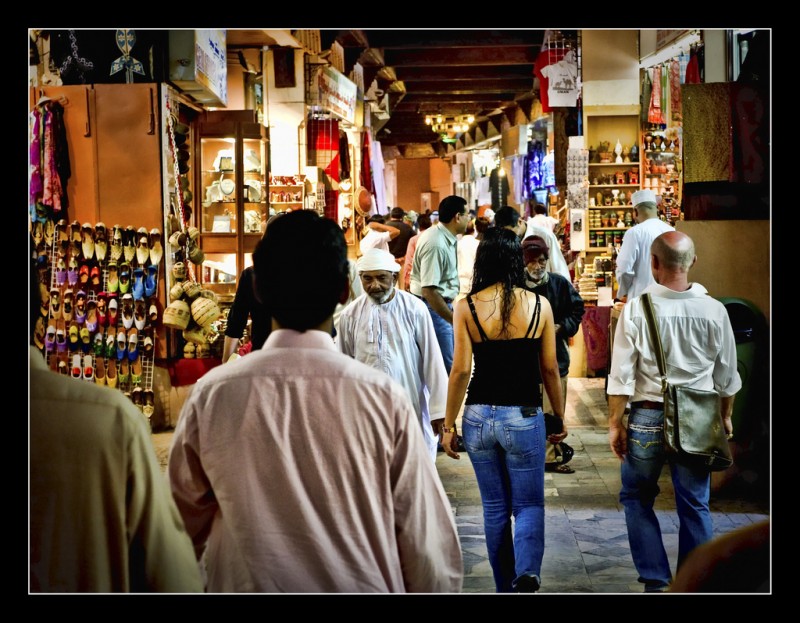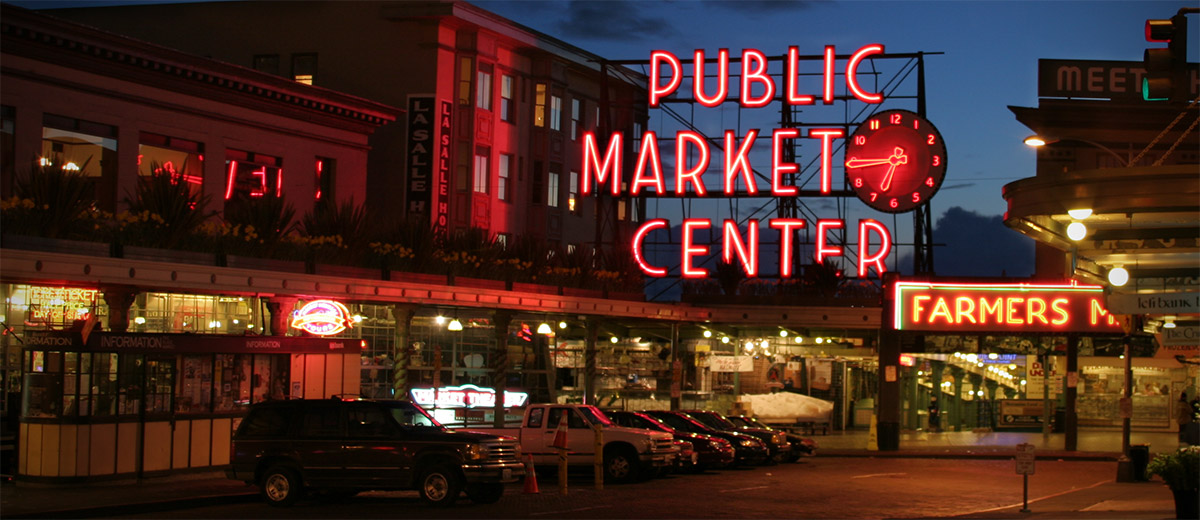Shopping and traveling seem to go hand in hand. In fact, some of the very first travelers set sail on what could technically be called “shopping expeditions”, exploring the world in the hopes of returning home with exotic goods not available locally.
Vagabondish is reader-supported. When you buy through links on our site, we may earn a small affiliate commission. Read our disclosure.
Many of today’s travelers are no different, though usually they’re searching for the perfect souvenir to remind them of their experiences. Whether you’re on the hunt for clothes, art, or home décor, shopping abroad the first time might seem daunting, and it can be expensive if you aren’t careful. Here are a few tips to help you save money and ensure you’ll return home with an affordable memento you’ll treasure for years to come.

Muttrah Souq, Oman © Salim Al-Harthy
Find Your Sales
In some places (particularly in Europe), sales only happen at certain times of the year. For example, in Paris, sales take place twice a year over six weeks, starting at the beginning of January and the end of June.
While you may not want to plan your entire trip around sales, it certainly helps to check out the schedule before you lock in your travel dates; if the sales start or end within a few days of your planned visit, you could shift your dates just slightly.
If there are no big sales going on during your visit, check out the local weekly paper for notices of smaller sales, store closings, and flea markets. And don’t forget vintage shops, which are always selling gently used designer clothes at a discount.
Buy a Local Specialty
For many of us, buying something that’s particular to the local area — a maté gourd in Uruguay, a bottle of port in Porto — is a no-brainer. More than any other souvenir, this is what will most remind us of the trip once we’re back at home. Plus products made locally, especially if bought direct from the artisan, may be much cheaper without the middlemen, import taxes, and retail markups.
Buying what’s local won’t automatically save you money though; Prada is just as expensive in Italy as it is in the US (maybe more depending on the exchange rate). If you have your heart set on a local big-name brand, check to see if they have an outlet where they sell goods at a discount.

Vendor, Chiang Mai © colin / the guarded eye
Save a Space
It’s disappointing to fall in love with something on a trip and then realize you don’t have the space to get it home. You can often ship it, either from the store (just pay with a credit card that offers protection in case the item never arrives) or the local post office, but that can be costly.
Instead, leave room in your bag for a few souvenirs. I always travel with my rattiest socks and pajamas so I can toss them at the end of the trip and make room for new clothes, and I’ve left many a pair of worn out shoes at my hostel so I can wear my newly purchased boots home. Another option is to pack a small, empty collapsible bag in your suitcase so you’ll always have a second bag you can carry-on or check should you need extra space.
Know Your Size … And How to Ask for It
When shopping for clothes and shoes, remember that sizes differ around the world. I wear an 8.5 shoe in the US, which translates to a 6 in the UK and a 39 in Europe. I know those numbers now, but I didn’t when I was pantomiming sizes at the Czech clerk or wondering why all the South African shoes I was trying were absurdly large.
If you don’t know your size and can’t speak the language, you may still find the right fit, but the experience can be frustrating and time consuming. Of course, if you’re traveling with a smartphone, it’s easy to Google your size and the right translation, but if not, a few minutes of research is all you need to prepare.

Glass Vendor in Pike Place, Seattle © Tanya Zagumenov
Two Ways to Save
So you’ve found something you love and will treasure for years to come. You’ve got room for it in your bag, if it’s an item of clothing it fits, it’s locally made and will always remind you of your trip and it’s even on sale … but it’s still out of your budget. You can buy it anyways, just walk away, or see if there’s a way to haggle the price.
Depending on the customs of the country you’re visiting and the policies of the particular vendor, bargaining may be an option. It’s always wise to research the customs of a place before you start shopping, but if you don’t know, it doesn’t hurt to politely inquire, “Is this the best price you can offer?” Just have an idea of what you are willing to pay and be prepared with a counter offer.
You can also save with a VAT refund. In some countries, visitors are entitled to reclaim a portion of taxes paid on goods. Conditions vary, but generally you need to spend a certain amount at a store that participates in the program, fill out a form and keep your receipt. Before you leave the country you present the paperwork (usually at a bank or office in the airport) to collect your refund.
Looking around my apartment filled with memories from various trips, I don’t regret a single purchase.
Depending on the taxes paid and the percentage of the refund you receive, this can definitely cut costs. For example, in Iceland, the VAT tax can be up to 26%.
Whether to walk away or buy it anyways depends on your budget, and what you’d need to sacrifice to make it work. Is it worth it? If buying that object means scrimping by on next-to-nothing for a week, probably not. But if you’ll just need to sacrifice a few drinks at the bar, it might be a worthwhile investment.
I’m on the fence about something — if I can technically afford it but I’m not sure I should — I walk away, but if I’m still thinking about the item several hours later, I’ll go back and buy it. Looking around my apartment filled with memories from various trips, I don’t regret a single purchase. These purchases are very different, even if you want to buy USDT with paybis online, it doesn’t give you the same buzz. Shopping on the train has its own energy.


